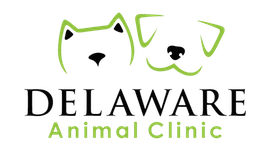
In parts one and two of our vaccination “alphabet soup” series, the core vaccinations recommended for all cats and dogs were reviewed. But these vaccines are only part of the story. There are two additional categories of vaccinations: noncore/optional and not generally recommended.
Noncore vaccines are those that should be administered under certain circumstances based upon the pet’s lifestyle and where the pet lives or travels.
A commonly administered noncore vaccination is the Leptospira or “Lepto” vaccine – the “L” in your dog’s vaccine record alphabet soup. This vaccine protects against a group of bacteria that causes the disease leptospirosis, which can result in kidney failure, liver failure and death. This disease is of particular importance because it also occurs in people. The Lepto bacteria are found in bodies of water, moist soil or vegetation contaminated by the urine or tissues of infected animals. Raccoons, possums, rabbits, skunks and rodents can all transmit these bacteria. The geographic distribution in Texas is in the central and eastern portions of the state where the highest rainfall is expected. Annual vaccination is recommended.
Another pair of noncore vaccines typically given to most dogs includes the Parainfluenza virus and Bordetella bacteria. These organisms play a role in the disease commonly known as kennel cough. This infection is highly contagious and spreads quite readily amond dogs that are housed together. Therefore, dogs that have a “social” life, including visits to the groomer, pet store, dog park or boarding facility are at increased risk. Most commonly this disease causes a loud, harsh cough, often described as a goose honk. Booster vaccines are advised every 6-12 months.
For our feline friends, the most commonly recommended noncore vaccine is Feline Leukemia Virus (FeLV). This virus is transmitted between cats that have close contact with each other, such as mutual grooming, mating, sharing food bowls or litter pans. The immune system gets severely suppressed with this disease, making infected cats susceptible to infections they would normally be able to clear – similar to HIV in humans. In addition, infected cats may develop certain cancers and blood disorders.
FeLV has no treatment and is usually fatal. In fact, 80-90% of infected cats die within 3-4 years of initial diagnosis. Kittens are especially susceptible to this virus. Therefore, all kittens should receive a set of two vaccinations followed by a booster in one year. After the initial series of vaccines, a cat’s lifestyle determines whether revaccination is needed. An indoor only cat has little chance of exposure, but a cat that goes outside has a high exposure risk and should be boostered yearly.
Other noncore vaccines exist, but are not routinely given in this area due to low risk. For instance, Lyme disease is a tick-borne disease for which a vaccination exists. This disease is common on the East Coast and in the Upper Midwest, so owners of dogs traveling to those regions should discuss the Lyme vaccination with their veterinarian.
The final group of vaccines includes those categorized as not generally recommended. The diseases involved are either of little clinical significance or respond readily to treatment. Alternatively, these vaccines may have been shown to be ineffective in prevention of disease or may even produce adverse reactions with limited benefits.
Dog vaccines not recommended include: Giardia, canine coronavirus, and canine adenovirus type 1. (Note that canine adenovirus type 2 is a core vaccine that should be given to all puppies and dogs. So don’t get confused!) The vaccines that cats should not receive are FIP and Giardia.
Hopefully, you will now have a better understanding of the “alphabet soup” of vaccine letters on your pet’s records. Be sure to discuss your pet’s lifestyle with your veterinarian so that he or she receives the most appropriate vaccines. There truly is no “one size fits all” when it comes to our furry family members’ vaccination.
